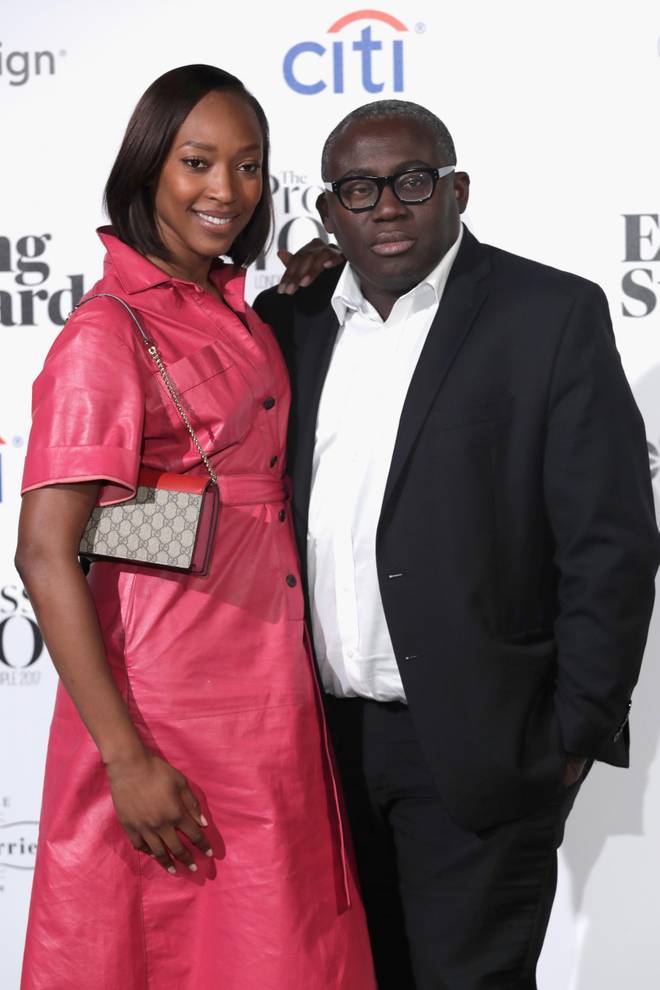Published 1 May 2018
Buckie Got It, St. Kitts and Nevis News Source
Vanessa Kingori on the new era of Vogue
Basseterre, St. Kitts, May 1, 2018 – Vanessa Kingori “never thought” she could be the publisher of Vogue, “although I’m embarrassed to say that now.” A black immigrant born in Kenya, raised in St. Kitts, “I’d never seen someone who looked like me running the commercial side.” Not only that, in the magazine’s 102-year history no previous publisher has been female.
It was Edward Enninful, Vogue’s new and first male editor, who drew her attention to this. “He said, ‘Congratulations you’re the first ever woman to do this’. I thought, ‘I can’t be’.”
At the time Kingori was publisher at GQ. As a mark of how little changed at Condé Nast (the parent company), the newest staff member in her office had been there seven years. Then: revolution. Vogue’s editor Alexandra Shulman retired after 25 years, Stephen Quinn, the publisher, after 26, and Nicholas Coleridge, the president of CondéNast, after 28 years. Following them out of the revolving doors of Vogue House in Hanover Square were deputies, directors, section editors, assistants and multiple bag-carriers. One can only imagine them, gloved and in sunglasses, leaving a trail of coloured feathers.
For the past 10 months, Enninful and his new team have been building from scratch. A new-era Vogue to respond to shrinking magazine sales, dwindling advertising revenue and an explosion in online and social media. “Good luck!” might have been the departing cry from their predecessors.
Until now, both Enninful and Kingori been quiet. Kingori says they wanted the figures to speak before they did.
Total sales are up 7.5 per cent since Edward’s first issue and UK newsstands sales have also increased. Total advertising revenue is up too, fuelled by a 26 per cent increase in digital advertising, and the company reports a 1,033 per cent increase in events and special projects revenue.
Today she allows herself a short smile while stressing they are “only at the beginning. We have a lot more to do.”
We meet in Vogue House boardroom, deco windows flung open to let in the sultry air. She’s 5ft 11in without heels, so probably six foot today in her Christian Louboutins. She’s towering, “a machine”, she jokes, who needs the power of food. Later she tells me how, as a young model appearing in a Vivienne Westwood retrospective at the V&A, she skipped lunch in sheer excitement at appearing in front of people like Mick Jagger and Jerry Hall, got halfway down the runway in her corset and fainted. “When I came round Mick Hucknall was standing over me.”
Margot Robbie and Nicole Kidman on the front cover of Vogue Feb 2018 (Vogue )
Among her coups at the company so far are persuading a number of megabrands to return — including Nike — as well as bringing in first-timers such as super cool Palace Skate and a sponsorship with Pinterest.
Amazing though it may sound, Louboutin had never advertised in Vogue (or anywhere) so Kingori persuaded him to do a project around his “nudes” — he has a range for 30 skin tones — to chime with Vogue’s drive for inclusion.
Although she wears it lightly, Kingori sees her role as political. She describes herself as “a child of the Windrush.”
She is the daughter of Mrs. Pat Richards-Leader, who went to the UK from St. Kitts at the age of 17, met her Kenyan father in London, and returned to London when Kingori and her sister were seven and nine
Mrs. Leader owns the Grange Nursing Home & Healthcare Facility in Ottley’s Village, St. Kitts. She opened The Grange in 2000.
And one thing was always clear: new era Vogue was about diversity and “new frontiers”. Enninful’s first cover featured Adwoa Aboah, a mixed-race London model, and the current cover features Halima Aden, the first hijab-wearing model to be used on a cover, as well as nine others from different ethnic backgrounds.
Other magazines have followed, but Kingori is wary. “We see this amazing trend to have more diverse faces on covers — and the power of the image is important — but it is only stage one.”
Kingori believes in “true change”: “True change from within that is reflected out.” So, she asks, what’s going on behind the scenes? Are these workplaces diverse? “Could we look at what the narrative is — who is writing the narrative? So it’s not just about the perception of diversity.”
She is quick to point out that “diversity is not just about race. It’s about diversity of perspective, which is also about class.” (This was briefly a raw nerve: in the post-Shulman exodus, there were unattributed quotes saying the new regime was wiping out posh girls).
But it’s also about age. February’s cover with Nicole Kidman was described by one paper as “disappointing.” Kingori doesn’t hide her annoyance. “People said, ‘why is there a white woman on the cover when [Enninful] said there’d be lots of diversity?’ We thought, ‘There is! Nicole Kidman is 50!’ It’s not often that you see a woman of 50 as a cover star.”
Equally, she says, there were those who criticised Enninful’s appointment of Venetia Scott as fashion director. “They said, ‘Oh my God, isn’t she old?’ They thought we’d only have kids from Hoxton with blue hair.”
Scott is “amazing, because she has so many experiences to draw on, anything that’s thrown at her she’ll know what to do. Younger stars might be drawing on newer experiences and trends that you and I don’t know about. But the combination is stronger than one or the other. Edward said, ‘This is diversity’.”
Edward Enninful: My Vogue is about being inclusive
This is what she loves about him. “He doesn’t mind sticking his neck out, saying, ‘Not everyone will get it but for those who do, it’s going to mean a lot’.”
They are friends. Now they work together, travel together, spend hours on the phone. Enninful is “hilarious”. There is an “Edward fan” in reception every day and last week an entire trolley of flowers arrived as an expression of thanks from a fan who finds new Vogue “makes me feel better about myself”.
When I ask about reports of his emotional outbursts — he is said to have cried because he was stuck in Milan when Anna Wintour arrived at London Fashion Week with the Queen — she looks sceptical: “I’ve never seen him cry.”
Photo 1 – Vanessa Kingori
Photo 2 – Vanessa Kingori and Edward Enninful (Getty Images)
Photo 3 – Vanessa Kingori attends the Black Magic Awards at Hackney Empire (Getty Images)







